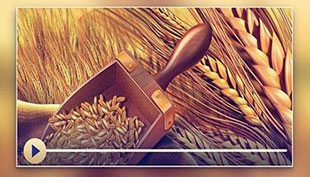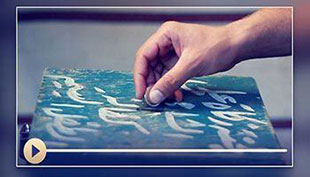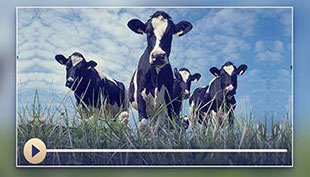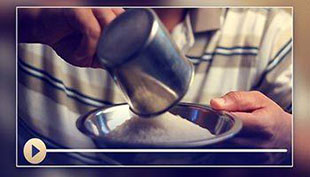Camels, cows and sheep/goats
Zakat on cattle
Definition of cattle
The Ruling of Zakat on Cattle
It is mandatory. The Prophet ﷺ said: “Any owner of camels, cows or sheep/goats that does not pay its due, on the day of resurrection they (the animals) will come to their owner in the best state of health they have ever had (in the world) and they will butt him with their horns and tread him with their hooves,[ Definition of hoof: a horny covering of the feet of certain animals] and whenever the last of the herd is through, the first starts all over again. (And this will continue) until (all) mankind have been judged.” [ Source: Muslim]
Conditions Necessitating Zakat on Cattle
1- Lapse of a full year while the animals are with the owner due to the Prophet’s statement ﷺ: “There is no Zakah on any property until a year lapses.” [ Source: Ibn Majah]
2- It must be grazed livestock. The Prophet ﷺ said: “Of grazed camels, out of every forty camels a she-camel that is two years old is to be paid.” [ Source : An-Nasai] A grazed camel is that which is fed by eating from plants of the earth and permissible grass i.e. that which grows by Allah’s command without being cultivated by anybody. However, if it feeds on cultivated crops; then it is not regarded as a grazed camel and Zakah is not due on it.
3- It must be kept for some benefit, either from its milk or offspring, and not used as a working camel.
A working camel is that which is employed by its owner to till or irrigate the land, carry goods or lift loads.
Zakah is not payable on a working camel, because–in such a case–they are counted as part of the basic needs of man, like clothing. However, when it is rented / hired to people; Zakah is due on whatever rent is derived from it, after a year has lapsed on it.
4- The cattle must attain the Nisab prescribed by shar’iah.
The Prescribed Nisab for Cattle
Firstly; Nisabs of camels and the measure of what is obligatory to be paid from each Nisab.
On the authority of Anas ibn Malik (may Allah be pleased with him) that Abu Bakr wrote to him: “This is the obligation of sadaqah (Zakah) that the Messenger of Allah ﷺ prescribed for the Muslims, upon the orders which Allah gave His Messenger. For every 24 camels or less, the Zakah to be paid is from ghanam (goats and sheep) – for every 5 (of them), a sheep / goat is paid. 25 to 35 camels, a she Bint Makhad[ Bint al-Makhad: that which is one year old] that is female is paid. When the amount reaches 36 to 45 a she Bint Labun[ Bint al-Labun: that which is two years old] is paid. For every 46 to 60 camels, a she Hiqqah[ Al-Hiqqah: that which is three years old], which is a malleable camel, is paid. which is a malleable camel. Furthermore when the number reaches 61 to 75, a she Jaza’ah[ Al-Jaza’ah: That which is four years old.] is paid. The one who possesses only four camels is not liable for the payment of sadaqah, except should the owner of the herd wish otherwise. However, when this number becomes five camels, a sheep / goat must be paid.” [ Source: Al-Bukhari]
Nisab and Zakat of camels
| Number of camels | Measure of mandatory Zakah to be paid |
| 5:9 | One sheep |
| 10:14 | Two sheep |
| 15:19 | Three sheep |
| 20:24 | Four sheep |
| 25:35 | A she-camel (above one year) |
| 36:45 | A she-camel (above two years) |
| 46:60 | A she-camel (above three years) |
| 61:75 | A she-camel (above four years) |
| 76:90 | Two she-camels (above two years) |
| 91:120 | Two she-camels (above three years) |
| 120... | for every forty: a she-camel (above 2 years), and for every fifty: a she-camel (above 3 years) |
Secondly; Nisabs of cows and the measure of what is obligatory to be paid for each Nisab
On the authority of Mu’adh ibn Jabal who said: “The Prophet ﷺ commanded me to collect from every thirty cows, a tabee’ [ Tabee’: A cow or bull that is one year old]– male or female– and from every forty, a Musinnah[ Al- Musinnah: A cow that is two years old],when he sent me to Yemen.” [ Source: Abu-Dawud]
Nisab and Zakat on cows
| Number of cows | Obligatory measure of Zakah to be paid | ||
| 30:39 | A bull / cow aged one year | ||
| 40:59 | A cow/ bull aged two years | ||
|
|
||
| 70:79 | A cow/ bull aged two years |
Thirdly; Nisabs of sheep / goats and the measure of what is obligatory to be paid from each Nisab
It is stated in the earlier hadith of Anas (may Allah be pleased with him): “Concerning the sadaqah of grazing ghanam (goats and sheep); when the herd is 40 to 120, a sheep is paid. When it increases from 120 to 200 then two sheep are paid. Furthermore when it increases from 200-300 then three sheep are paid. Finally if it increases more than 300, for every 100 an extra sheep is paid. When the grazed herd of a man is less than 40, then no sadaqah is owed, except should the owner of the herd wish otherwise.” [ Source :Al-Bukhari]
Nisab and Zakah on sheep/goats
| Number of sheep / goats | Obligatory measure of Zakah to be paid |
| 40:120 | One sheep |
| 121:200 | Two sheep |
| 201:300 | Three sheep (and on every hundred more than this, an extra sheep is added) |
The description of the Zakah that has to be taken
It is an obligation that Zakah is not to be taken from the best or worst of people’s possessions, but rather from the average.
The Zakah collector should also take into account the age which is due, since it is not acceptable to take less than that; because this would harm the poor. It is also not acceptable to take higher than that age; because that would be unfair to the rich. Moreover, he should not take the sick, the defective, the large, nor the aging; because this does not benefit the poor. In return he should not take al-koola, which is the fat animal intended to be eaten, nor al-roba which is breeding its little ones, nor al-makhedd, which is the pregnant. He should also not take the hirzat al-mal, which is the best of the wealth that is kept away from people’s sight, because it is the best of wealth and taking that would harm the rich. The Messenger of Allah ﷺ said: “Be careful not to take the best of their properties (as payment of Zakah).” [ Source :Al-Bukhari]
Joint ownership of cattle
There are two types:
The first type: Khultat A’yaan
This is when the property that is jointly owned cannot be distinguished from each other. Khultat A’yaan can happen through inheritance and trade.
The second Type: Khultat Awsaf
This is when the share of each person is distinguishable from the other and known, and the only thing that joins them is their vicinity to each other.
For both types of Khulta, the property of the two persons should be joined together and considered as one amount, if the amount together adds up to a Nisab. Both persons should also be from those upon whom Zakah is obligatory. Thus if one of them is an unbeliever, his khulta is void and has no effect. The khulta cattle should also have the same resting place or barn, the same pasture, the same milking place and one fahl (bull) which should be able to mix with them all.
If these conditions exist, then the two properties are considered as one due to the effect of the khulta.The Messenger of Allah ﷺ said: “Those which are in separate flocks are not to be joined, and those which are in one flock are not to be separated for fear of (having to pay) sadaqah (Zakah). Regarding that which belongs to two partners, they can make claims for restitution from each other with equity.” [ Source: Ibn Khuzaima]
Khulta can make Zakah obligatory, but this is only the case for cattle, and nothing else.
- An example of bringing together that which are in separate flocks is when there are three people, and each person owns forty sheep, i.e. all of them add up to one hundred and twenty sheep. If we consider each one alone, the Zakah due on the three people is three sheep (one each). If they, however, gathered all the sheep together, then the Zakah would be only one sheep for the three people. In this case they brought together what was separate, in order to pay only one sheep for Zakah instead of three.
- An example of separating what was brought together is a person who owns forty sheep. When he knows that the Zakah collector is coming, he separates his sheep, putting twenty of them in one place and the other twenty in another so as not to be considered as a Nisab; as when separated like this, no Zakah is due on them.






 Other Types Of Zakat
Other Types Of Zakat
 Zakat on merchandise
Zakat on merchandise








